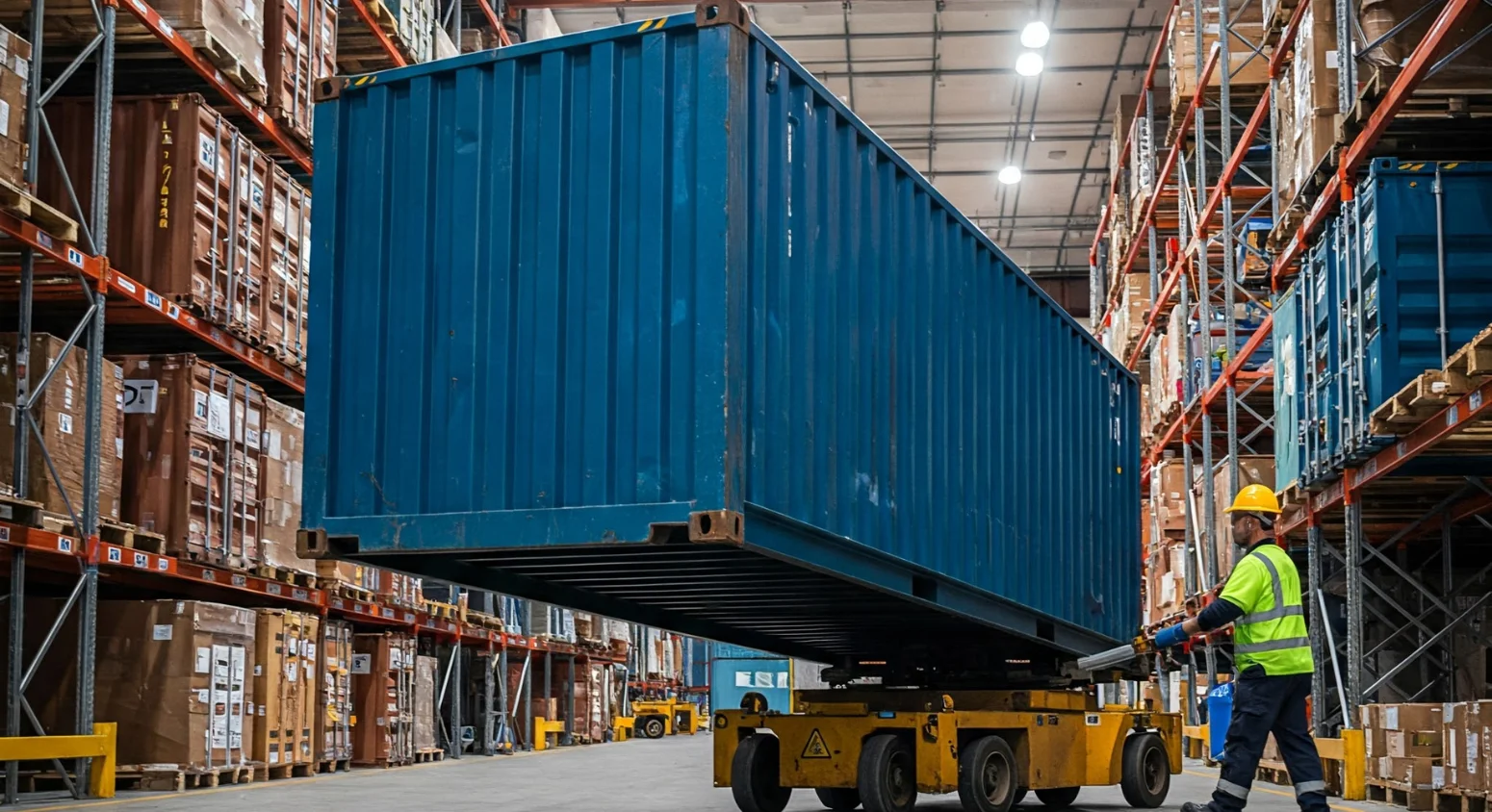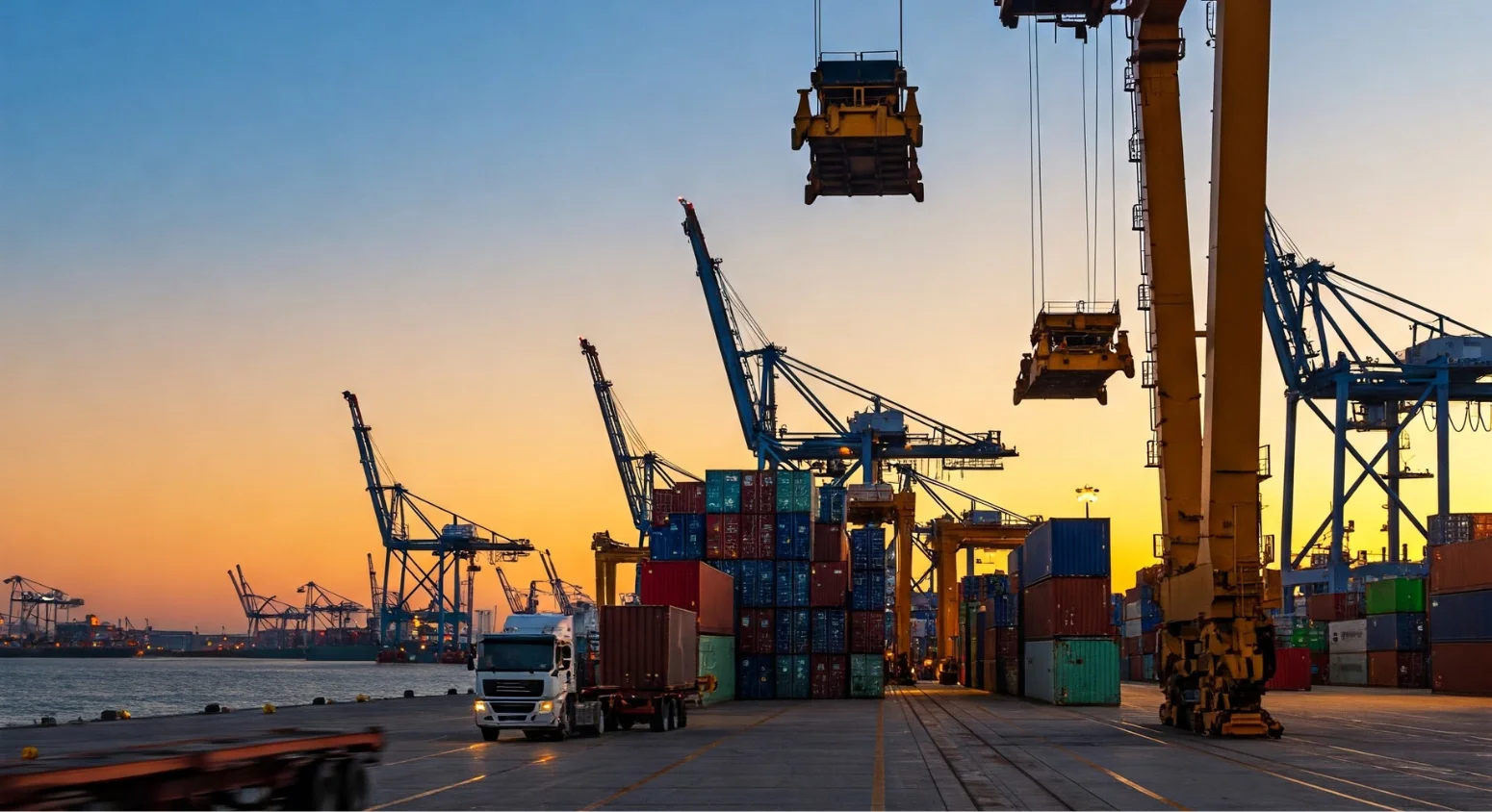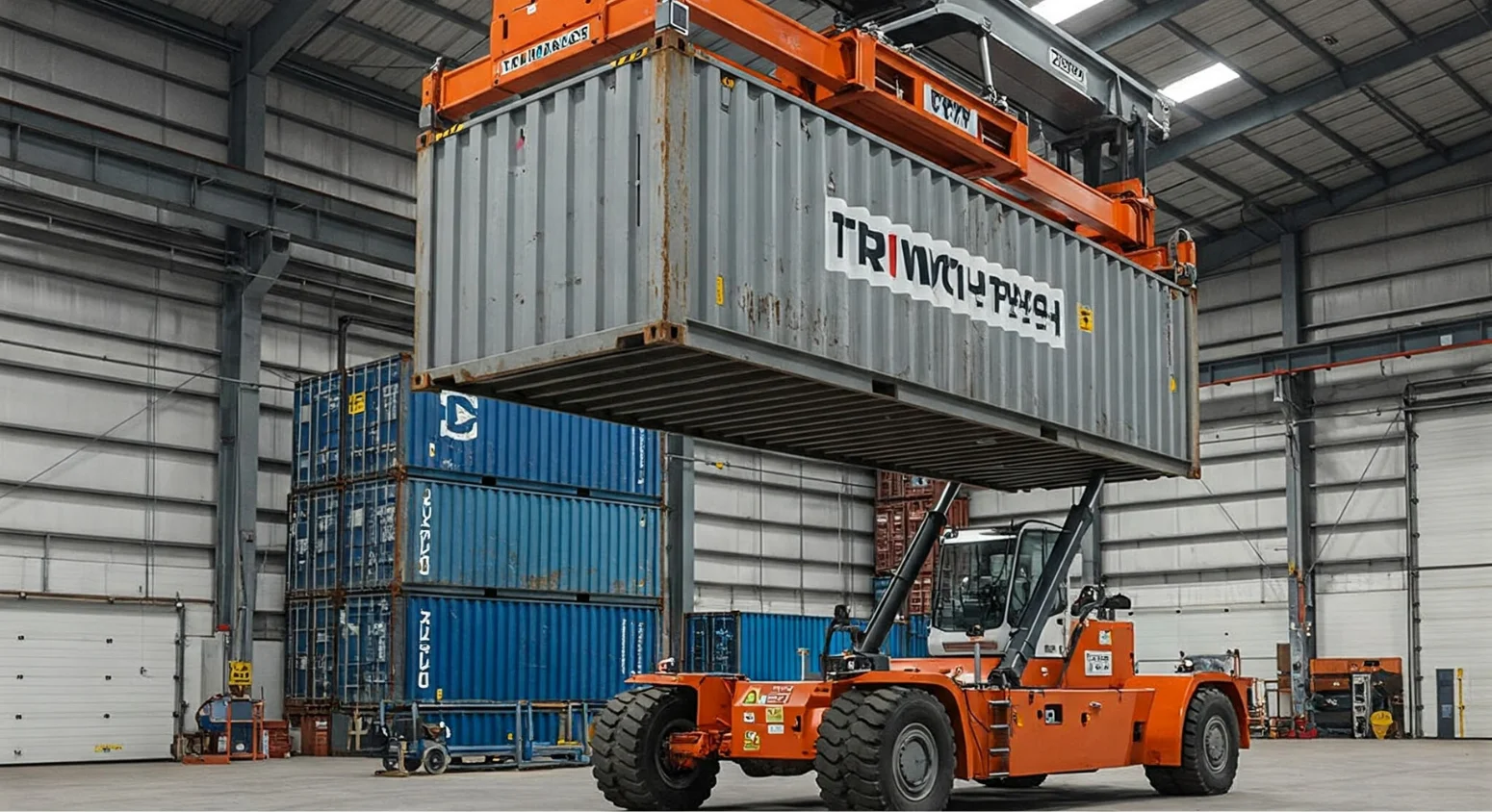Moving heavy containers isn’t just about brute force—it’s about strategy, precision, and the right equipment. If you’ve ever struggled with maneuvering high-weight containers, you know that choosing the right wheels for high-weight container mobility can make all the difference. But with so many options—heavy-duty wheel dollies, tire dolly wheels, and shipping container dollies—how do you select the best fit for your needs?
The wrong wheels can lead to inefficiencies, safety risks, and unnecessary strain on your equipment. The right ones, however, can enhance mobility, durability, and load capacity, making container transport seamless and stress-free. Whether you’re working in industrial shipping yards, automotive settings, or heavy-duty transport, understanding wheel materials, load ratings, and terrain compatibility is crucial.
In this guide, we’ll break down everything you need to know about selecting wheels for high-weight container movement. From understanding the key factors that impact performance to exploring why vehicle wheel dollies and heavy-duty off-road casters are game changers, we’ll ensure you make the best choice for your operation. Ready to optimize your container mobility? Let’s dive in.
Table of Contents
1. Why Choosing the Right Wheels Matters
If you’ve ever struggled to move a heavy container, you know how frustrating it can be. The wrong wheels can make the job difficult, slow, and even dangerous. But with the right wheels for high-weight container mobility, you can move containers more easily, safely, and efficiently.
How Good Wheels Make a Difference
Not all wheels work the same way. The right tire dolly wheels or heavy-duty wheel dollies can:
- Make movement easier – Strong, smooth-rolling wheels reduce friction, so you use less effort.
- Protect your equipment – The right wheels evenly support the weight, preventing strain and damage.
- Improve control – Whether using vehicle wheel dollies or shipping container dollies, better wheels help you steer and stop more smoothly.
- Prevent floor damage – The wrong wheels can scratch floors or get stuck on rough ground.
Common Problems with the Wrong Wheels
If you’re using the wrong wheels for high-weight containers, you might face:
- Too much effort needed – Hard-to-roll wheels make moving containers a struggle.
- Wheels wearing out quickly – Low-quality wheels crack or break under heavy loads.
- Trouble moving on rough ground – Some wheels aren’t designed for bumps or uneven surfaces.
- Safety risks – Unstable wheels can cause containers to tip or roll uncontrollably.
How the Right Wheels Improve Safety and Efficiency
By choosing the best wheels for high-weight container mobility, you get:
- Less effort, more work done – Stronger wheels make moving heavy loads easier.
- Long-lasting equipment – Durable wheels mean fewer replacements and lower costs.
- Safer movement – Stable wheels help prevent tipping and accidents.
Picking the right wheels can save time, money, and energy. In the next section, we’ll look at what to consider when choosing the best wheels for high-weight containers.
2. Key Factors to Consider When Choosing Wheels
Not all wheels are built the same. If you choose the wrong wheels for high-weight container mobility, you might struggle with movement, deal with frequent breakdowns, or even put your cargo at risk. But how do you know which wheels are the best fit for your needs?
Here are the most important factors to consider when selecting wheels for high-weight containers.
1. Load Capacity: Can the Wheels Handle the Weight?
One of the biggest mistakes people make is choosing wheels that can’t support the weight of their containers. If the wheels are too weak, they can flatten, crack, or even break under pressure.
To avoid this:
- Check the maximum weight rating of the wheels before buying.
- Choose heavy-duty wheel dollies if you’re moving extremely large loads.
- Consider airplane wheel dollies or shipping container dollies for industrial-level weight handling.
2. Wheel Material: What Works Best for Your Needs?
Different wheel materials offer different benefits. The right choice depends on your working environment and the type of surface the wheels will roll on.
- Rubber Wheels – Great for smooth floors, providing shock absorption and a quieter ride.
- Polyurethane Wheels – Stronger than rubber, offering durability and resistance to wear.
- Steel or Metal Wheels – Ideal for high-weight container transport on rough terrain but can be noisy.
- Heavy-Duty Off-Road Casters – Best for uneven or outdoor surfaces where stability is needed.
3. Surface Compatibility: Where Will You Be Moving Containers?
The type of flooring or ground surface plays a huge role in how well your wheels will perform. Consider:
- Warehouse floors – Use vehicle wheel dollies or auto dolly wheels for smooth rolling.
- Concrete or asphalt – Polyurethane wheels work best for durability.
- Uneven terrain – Opt for heavy-duty off-road casters that can handle bumps and dips.
4. Maneuverability: Swivel or Fixed Wheels?
Do you need to move in tight spaces or make sharp turns? The type of wheels you choose affects how easily you can control movement.
- Swivel wheels – Best for making turns and moving in different directions.
- Fixed wheels – More stable for straight-line movement, ideal for long-distance transport.
- Combination (Swivel + Fixed) – A mix of both gives you control and stability.
5. Durability and Maintenance: How Long Will the Wheels Last?
Wheels wear out over time, but choosing high-quality ones can extend their lifespan. Look for:
- Reinforced bearings to handle high-weight container loads.
- Non-corrosive materials if working in wet or outdoor conditions.
- Regular maintenance like cleaning and lubrication to keep wheels rolling smoothly.
Choosing Wisely for Long-Term Performance
Selecting the right wheels for high-weight container mobility is about more than just picking the strongest option—it’s about matching the right wheels to your environment and load type. By considering weight capacity, material, surface compatibility, and maneuverability, you can improve efficiency, reduce risks, and get the most out of your vehicle wheel dollies or heavy-duty wheel dollies.
Next, we’ll explore why wheel dollies are one of the best solutions for high-weight container movement.
3. Wheel Dollies: A Smart Solution for Heavy Containers
When it comes to moving high-weight containers, not all mobility solutions offer the same level of efficiency and ease. If you’re looking for a reliable, easy-to-use option, wheel dollies are one of the best tools available. But what exactly are they, and why are they such a game-changer for heavy loads?
What Are Wheel Dollies and How Do They Work?
A wheel dolly is a specially designed platform with wheels that allows you to move heavy containers with minimal effort. Instead of dragging or using bulky machinery, shipping container dollies help distribute weight evenly, making movement smoother and safer.
These come in different types, including:
- Vehicle wheel dollies – Designed for cars and trailers but also effective for heavy industrial loads.
- Heavy-duty wheel dollies – Built to support extreme weights, perfect for shipping containers.
- Tire dolly wheels – Ideal for moving loads that require rotational flexibility.
- Airplane wheel dollies – Used in aviation but also suitable for handling other high-weight equipment.
Advantages of Using Triwich Wheel Dollies for Heavy Containers
Why should you choose Triwich Wheel Dollies for high-weight container mobility instead of forklifts or cranes?
- Less Effort Required – Heavy loads become easier to move, reducing strain on workers.
- Enhanced Maneuverability – Auto dolly wheels and single wheel dollies allow for smoother turns and controlled movement.
- Versatile Applications – Whether you’re in logistics, manufacturing, or automotive industries, there’s a wheel dolly truck for your needs.
- Cost-Effective – Compared to heavy machinery, heavy-duty wheel dollies are an affordable and long-term investment.
- Safer for Cargo and Workers – Reduces the risk of accidents, tipping, or equipment damage.
Comparing Wheel Dollies to Other Mobility Solutions
If you’re deciding between shipping container dollies and other options like forklifts or pallet jacks, here’s how they compare:
| Feature | Wheel Dollies | Forklifts | Pallet Jacks |
| Ease of Use | Simple, no training required | Requires licensing | Easy but limited weight capacity |
| Weight Handling | Supports heavy loads | Handles extreme weights | Limited capacity |
| Space Efficiency | Works in tight areas | Needs large space | Good for small loads |
| Cost | Affordable | Expensive | Budget-friendly |
| Safety | Lower risk of tipping | Can be hazardous | Moderate safety |
Why Wheel Dollies Are the Best Choice
For those handling wheels for high-weight container movement, wheel dollies provide the perfect mix of affordability, convenience, and efficiency. Unlike forklifts, which require training, or pallet jacks, which may struggle with extreme weights, heavy-duty wheel dollies offer the flexibility and strength needed for industrial applications.
In the next section, we’ll explore how to get the best performance out of your wheel dollies, ensuring long-term durability and safety.
4. Maximizing Performance and Longevity of Wheel Dollies
Investing in wheel dollies for high-weight container mobility is a smart choice, but to get the best performance, you need to use and maintain them properly. Poor handling or lack of maintenance can lead to premature wear, reduced efficiency, and even safety risks. Here’s how you can ensure your heavy-duty wheel dollies stay in top shape and last for years.
Best Practices for Using Wheel Dollies
To get the most out of your shipping container dollies, follow these key guidelines:
- Match the Load Capacity – Always check the weight rating before use. Overloading vehicle wheel dollies can cause structural damage or wheel failure.
- Distribute Weight Evenly – Position the container correctly to ensure balanced weight distribution. Uneven loading can strain the tire dolly wheels, making movement difficult.
- Use the Right Surface – Heavy-duty off-road casters work best on rough terrain, while auto dolly wheels roll smoothly on polished floors.
- Secure the Load – Prevent shifting by ensuring containers are stable before movement. Loose loads can create dangerous imbalances.
- Choose the Right Dolly Type – For tight spaces, single wheel dollies offer better maneuverability, while heavy-duty wheel dollies provide more stability for straight-line movement.
Maintenance Tips to Extend the Life of Your Wheel Dollies
Proper maintenance is essential to keep your wheel dolly truck functioning efficiently. Regular checks and upkeep can prevent costly replacements and downtime.
- Inspect Wheels Before Use – Look for cracks, flattening, or signs of excessive wear on the tire dolly wheels. Replace worn-out wheels immediately.
- Keep Bearings Lubricated – Apply lubricant to bearings and axles to reduce friction and extend wheel life. Dry or rusted bearings can make rolling difficult.
- Clean Off Debris – Dirt, dust, and grease buildup can reduce mobility. Wipe down vehicle wheel dollies after each use to maintain smooth movement.
- Check Fasteners and Frames – Tighten loose bolts and inspect metal parts for bending or damage, especially on heavy-duty wheel dollies used for extreme loads.
- Store Properly – Keep automotive wheel dollies in a dry, covered area to prevent rust and weather-related wear.
Common Mistakes That Can Damage Wheel Dollies
Even the best wheels for high-weight container movement won’t last if they’re used incorrectly. Avoid these common mistakes to ensure long-term performance:
- Overloading the Dolly – Exceeding the weight limit can cause wheels to crack or collapse.
- Dragging Instead of Rolling – Always push or pull smoothly; dragging damages shipping container dollies over time.
- Ignoring Uneven Surfaces – Using the wrong dolly type on rough terrain can wear down wheels quickly.
- Skipping Regular Maintenance – Dirt and rust buildup reduce efficiency and increase rolling resistance.
- Using the Wrong Type of Wheels – Make sure you have heavy-duty off-road casters if operating in rough conditions.
Keep Your Wheel Dollies Rolling Smoothly
By following these usage and maintenance tips, you can extend the lifespan of your wheel dollies and keep your high-weight container mobility operations running smoothly. A little care goes a long way in ensuring safety, efficiency, and cost-effectiveness.
In the next section, we’ll explore how choosing the right supplier for heavy-duty wheel dollies can make all the difference in performance and durability.
Conclusion: Move Containers with Ease
Choosing the right wheels for high-weight container mobility isn’t just about convenience—it’s about making your work safer, faster, and more efficient. The right wheel dollies can help you move heavy containers with less effort, reduce the risk of damage, and improve overall workflow.
By selecting the right heavy-duty wheel dollies, following best practices, and keeping them well-maintained, you’ll get the most out of your investment. Whether you need shipping container dollies for warehouses, tire dolly wheels for smooth rolling, or heavy-duty off-road casters for rough terrain, making the right choice will save time and effort in the long run.
Looking for the best way to move your containers? Take the time to pick the right wheel dolly truck for your needs. A good set of wheel dollies will make your job easier and keep your operations running smoothly for years to come.
Frequently Asked Questions
1. What kind of wheel dolly do I need for moving heavy containers?
What kind of wheel dolly do I need for moving heavy containers?
It depends on where and how you’re moving them. Heavy-duty wheel dollies are best for large loads, while single wheel dollies help in tight spaces. If you’re working on rough ground, heavy-duty off-road casters will perform better.
2. How do I know if a wheel dolly can hold my container’s weight?
Check the weight rating before using it. Overloading a shipping container dolly can damage the wheels and make moving unsafe. If you’re handling extra-heavy loads, go for heavy-duty wheel dollies built for the job.
3. How do I take care of my wheel dollies?
Regularly check for worn-out wheels, clean off dirt and debris, keep bearings lubricated, and tighten any loose bolts. Storing vehicle wheel dollies in a dry place will also help prevent rust.
4. Can I use wheel dollies on uneven ground?
Yes, but it depends on the type. Standard automotive wheel dollies work best on smooth floors, while heavy-duty off-road casters are designed for rougher terrain. Choosing the right wheels will make moving containers much easier and safer.



